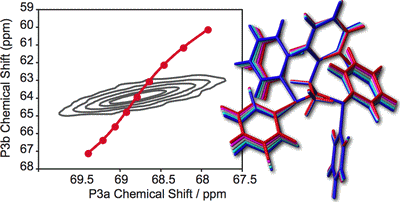Ask for a reprint
email :
* Give your email
2009
ACL
|
S.Cadars, A.Lesage, C.J.Pickard, P.Sautet, L.Emsley, 'Characterizing Slight Structural Disorder in Solids by Combined Solid-State NMR and First Principles Calculations', J. Phys. Chem. A 113 902–911 (2009) doi:10.1021/jp810138y
A general approach for structural interpretation of local disorder in partially ordered solids is proposed, combining high-resolution two-dimensional (2D) nuclear magnetic resonance (NMR) and first principles calculations. We show that small chemical shift variations of the order of a ppm can be interpreted in detailed structural terms with advanced density functional theory methods. Focusing on a model system of bisphosphinoamine, we demonstrate that the existence and the spatial range of small amplitude disorder can be probed using quantitative statistical analyses of 2D NMR lineshapes obtained from through-space correlation experiments collected using variable mixing times. We show how low-energy vibration modes calculated from first principles can be conveniently used not as a cause of disorder but, instead, to generate a basis set of physically plausible local distortions to describe candidate static distributions of local geometries. Calculations of 31P NMR isotropic chemical shifts are then used for the first time to simulate 2D correlation lineshapes associated with these distortions, which permit their evaluation as a potential source of disorder by comparison to experimental 2D cross-peaks between phosphorous sites. This new type of structural constraints allows the identification of changes in the bonding geometry that most likely contribute to the local structural disorder. We thus identify at least one type of structural deformation that is compatible with the experimental 2D NMR data, and is also within the order of magnitude of the “thermal ellipsoids” associated with the uncertainties on the atomic positions of the X-ray diffraction structure.
|

|